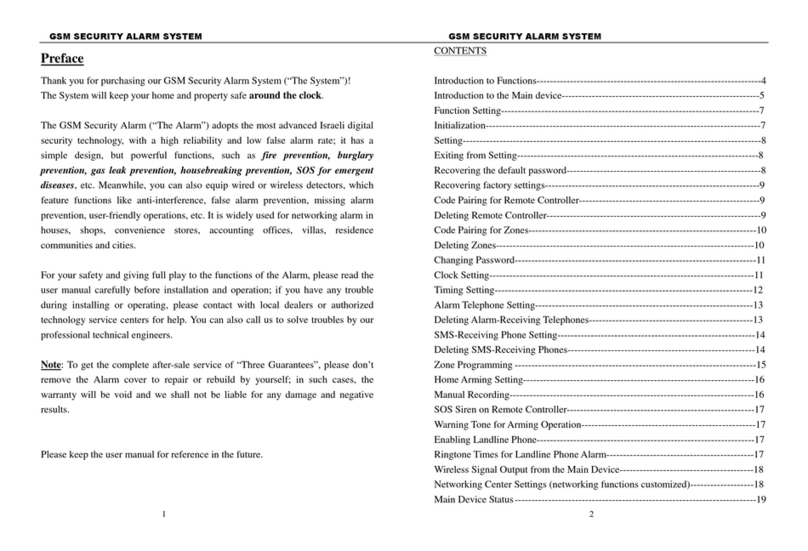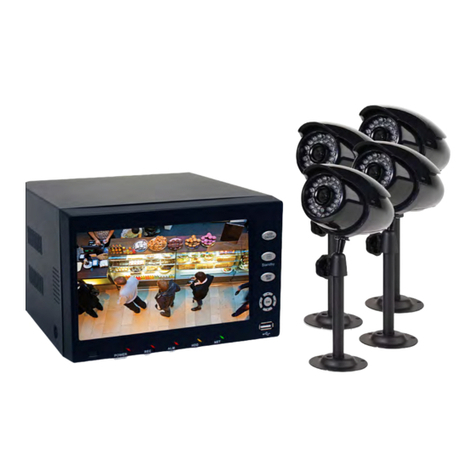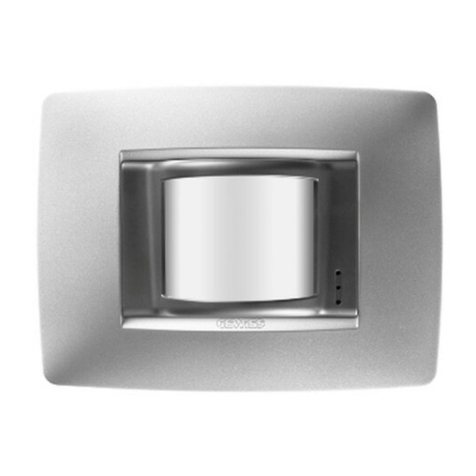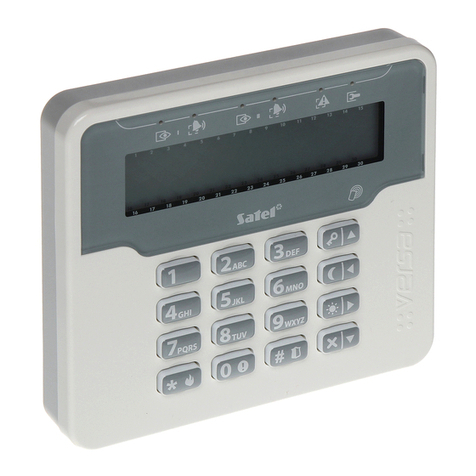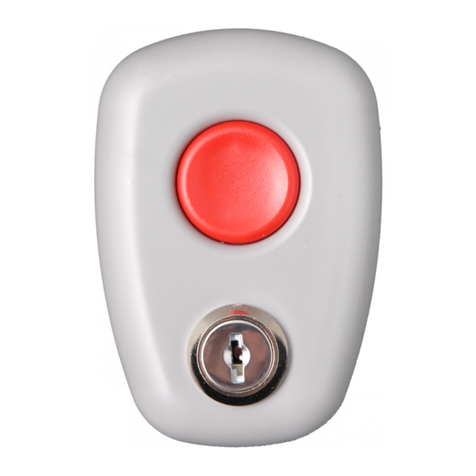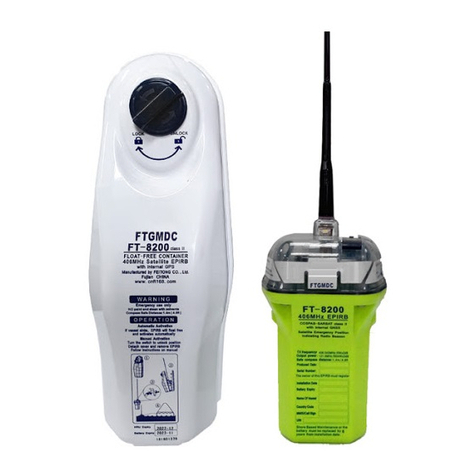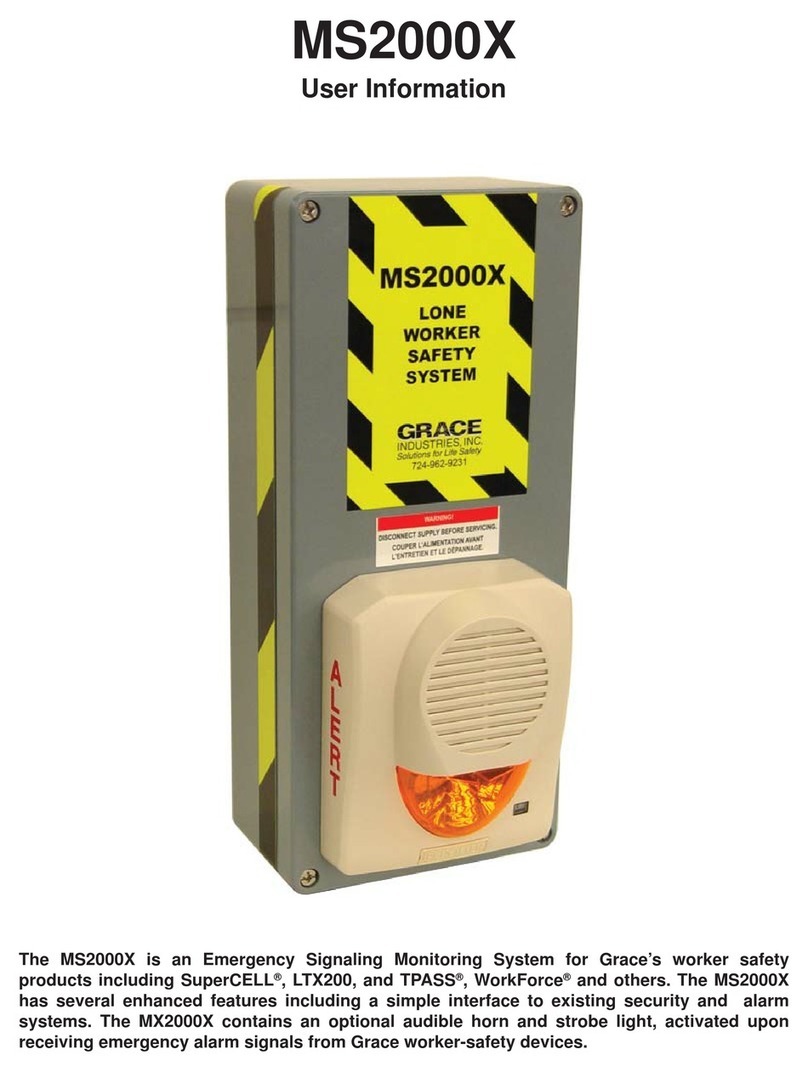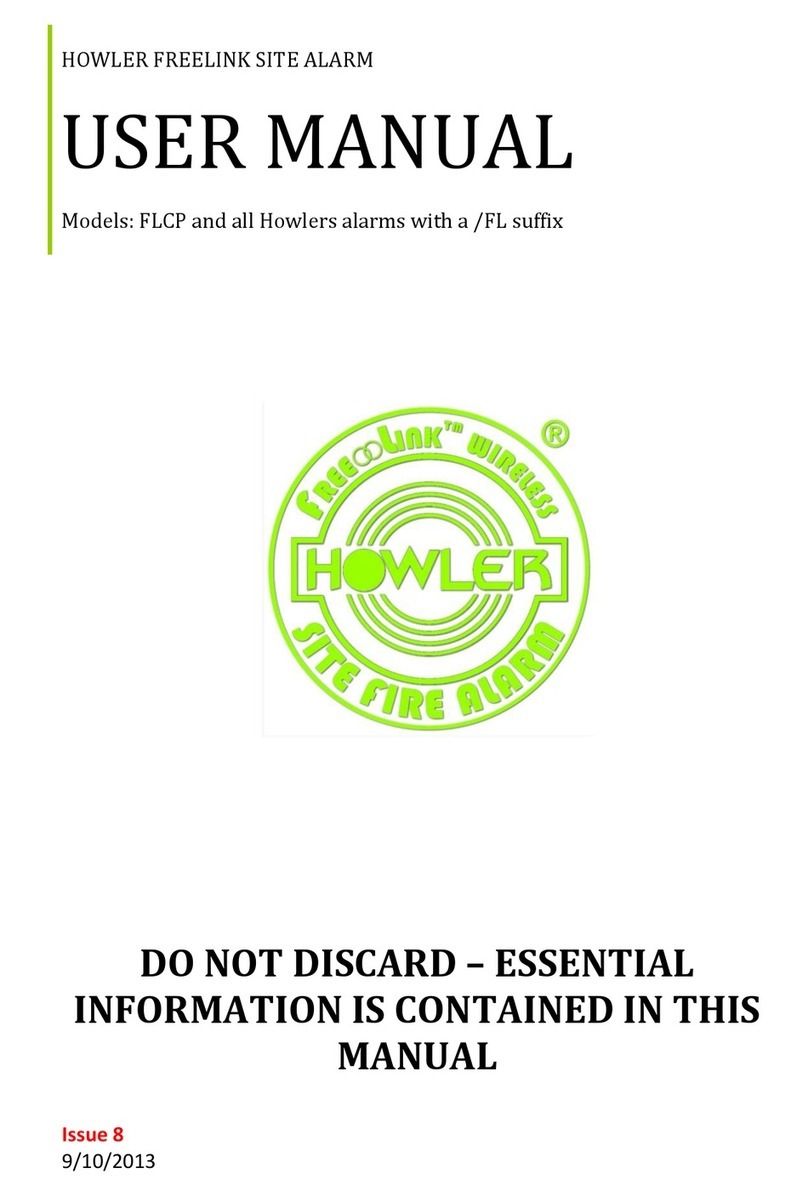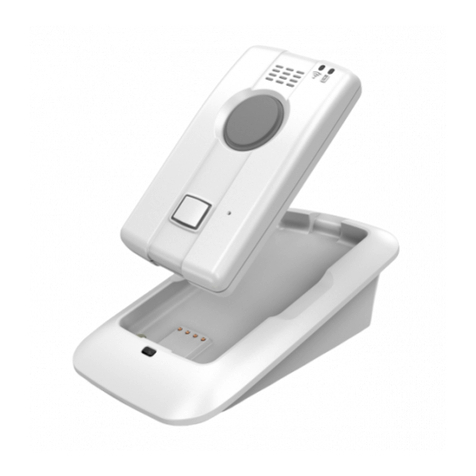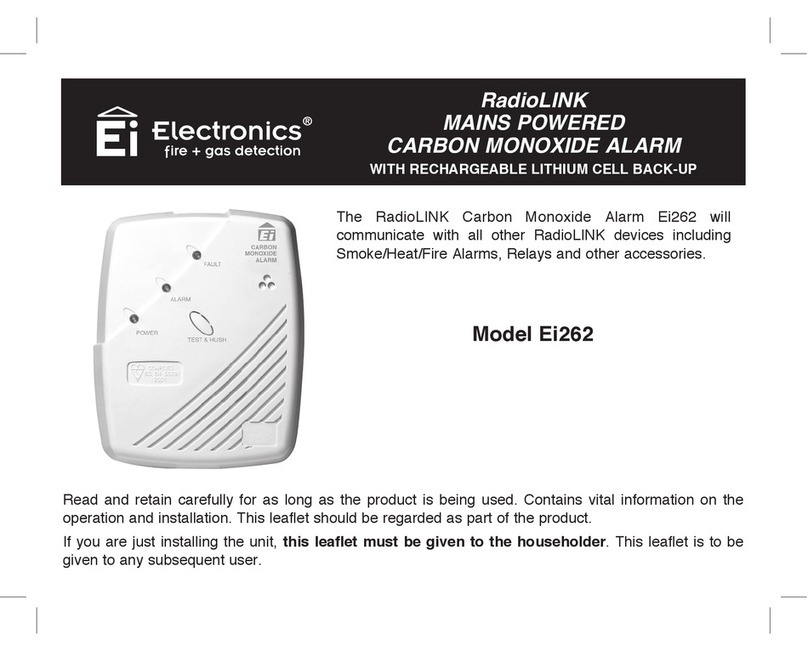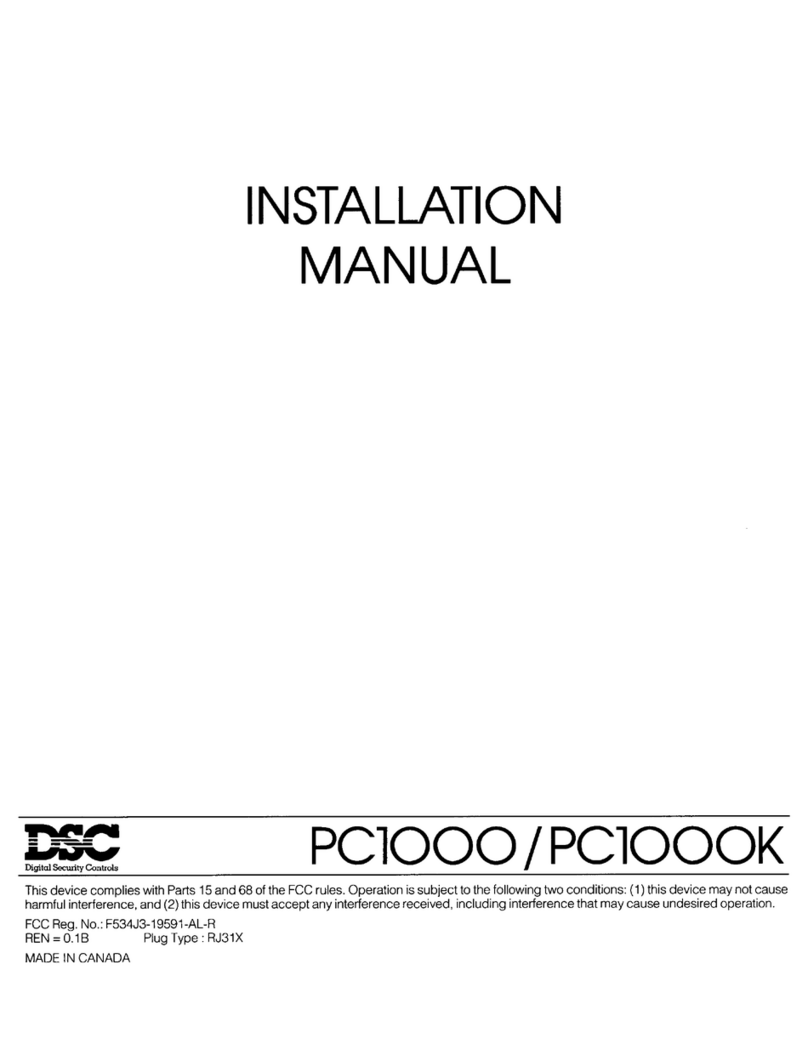First Innov PRIMAPROTECT Operating instructions

User notice Primaprotect version 1.0
1
INFRARED PERIMETER
POOL ALARM SYSTEM
PRIMAPROTECT
User and Installation
Notice
To read attentively and to conserve for further consultation
The alarm system Primaprotect is AFNOR NF P 90-307 compliant.

User notice Primaprotect version 1.0
2
This alarm system does not replace neither the common sense nor
the individual liability. Its purpose is not to replace the vigilance of
the parents and/or the responsible adults, which remains the main
factor of protection of children under five years old.
WARNING
A WRONG POSITIONING OR A NON
CONFORM INSTALLATION MAY CAUSE
DYSFUNCTIONS
OF THE ALARM SYSTEM
PLEASE READ CAREFULLY THIS NOTICE
BEFORE PUTTING THE SYSTEM INTO
SERVICE
1- The content of this booklet may be subject to changes without any prior notice.
2 – Due to printing restrictions the symbols displayed in this manual can differ from the
ones in the product.
3 – The content of this booklet cannot be reproduced without the authorization of the
manufacturer.

User notice Primaprotect version 1.0
3
Table of contents
1 FUNCTIONAL DESCRIPTION OF THE PRIMAPROTECT ALARM SYSTEM 4
2 COMPONENTS OF THE KIT : 4
3 INSTALLATION 6
3.1 Positioning the posts: 6
3.2 Limits regarding the positioning of the posts 7
3.3 Preparing and mounting the posts 8
3.4 Plugging the batteries 8
3.5 Matching and aligning the infrared beams 9
4 UTILISATION 11
4.1 Arming / Disarming the alarm system 11
4.2 Shutting off the siren 12
4.3 Shutting down the system 12
5 DIFFERENT CONFIGURATIONS OF PROTECTION 12
6 ACCESSORIES (provided in option) 15
6.1 Recognition of the accessories by the master post 15
6.2 Sensor bracelet 16
6.3 Remote 17
7 FAILURES 18
7.1 Weak battery indicator of the posts 19
7.2 Weak battery indicator of the accessories 19
8 MAINTENANCE 19
8.1 Changing the batteries of the safety bracelet 20
8.2 Changing the batteries of the remote 20
8.3 Cleaning the panes 21
8.4 Cleaning the bracelet 21
9 Interpretation of the sounds and visual signals of the alarm system 21
10 Guarantee, responsibility 22
11 Safety notice 24
12 Technical characteristics 26
13 WASTE COLLECTION FOR ELECTRONIC EQUIPMENTS AND BATTERIES 27

User notice Primaprotect version 1.0
4
Green LED that indicates that swimming is not
authorized / System is active
Red LED “ failure”
Red LED that indicates that swimming is
authorized / Temporary deactivation
LED activation / deactivation
Recognition and wintering mode
Activation
Deactivation
Mode
Infrared cells
Fixation’s screws
1 FUNCTIONAL DESCRIPTION OF THE PRIMAPROTECT ALARM SYSTEM
The perimeter alarm system Primaprotect detects any crossing of the infrared beams by a
child. The infrared beam is positioned in two different heights in order to form two
protected areas: One at 20 cm and the other one at 45 cm from the ground.
You can add various extra features to the Primaprotect alarm system such as (see § 6) :
- A remote control or a remote keypad with a digit security code
- A safety bracelet that detects the fall into the water of the child that wears it. It is
highly recommended as an extra safety device when the barrier alarm system is
deactivated.
- A wireless gate sensor, which triggers a series of “beeps”, if the entrance gate to
the pool, the door or the window of your residence is opened.
2 COMPONENTS OF THE KIT :
It is advisable to check that the kit is complete and that you have all the following items :
-A master post and three slave posts.
-A fixation Kit (inside each post)
-A bag containing a magnetic key, the user and installation notice, the LNE
Certificate of Conformity, the guarantee and the operation sheet (to return
back to us).
Figure 1 : Magnetic key
Figure 2 : The exterior of the master pole

User notice Primaprotect version 1.0
5
Activation/Deactivation
Green LED : the cells
are properly aligned
Red LED : The cells are not
aligned.
Red LED: ” Failure”
Recognition mode
LEDs :
Transmitting cell
Batter
y
connecto
r
3V battery
9V batter
y
Integrated siren
Receiving cell
Mounting holes
Receiving cell
Transmittin
g
cell
Infrared cells
Figure 3 :Inside of the master pole
Figure 4 : Composition of the slave post
3V batter
y
3V battery connector
Mounting holes
Transmittin
g
cell
Receiving cell
Transmittin
g
cell
Receiving Cell

User notice Primaprotect version 1.0
6
3 INSTALLATION
A correct installation is imperative for a good operation of the system. Read carefully the
following instructions.
NB : It is advised to have a professional install and maintain your alarm system.
Your central unit Primaprotect must be installed in such way that it can not be moved with
bare hands (without appropriate tools).
Use an adapted drill with a 12 mm diameter bit, an electric or a regular Phillips screwdriver
For your installation, do not start drilling right away.
Illustration 5 :Tools needed for your installation
3.1 Positioning the posts:
Illustration 6 : Example of installation around a rectangular swimming pool
Position the master post n°1 and slave posts n°2, n°3 and n°4 clockwise as indicated in
the drawing above. The number corresponding to the post is indicated on the top of the
post , next to the cells.
Each post comprises 4 windows behind which the transmitting and receiving infrared cells
are located. Make sure that the infrared cells are facing each other as shown in the
drawing above.
The maximum distance between two posts cannot exceed 20m and cannot be inferior to
3m.
Master post n°1
Slave post n°2 Slave post n°3
Slave post n°4

User notice Primaprotect version 1.0
7
3.2 Limits regarding the positioning of the posts
Warning
A wrong installation may cause dysfunctions of the system which represents a real danger
to the safety of your child.
Do not expose the posts too close to a reflecting surface (minimum 1.5m). Whichever
season it is do not let any vegetation cut through the infrared beams.
While using the safety bracelet, the maximum distance between the master post and the
furthest possible location of fall of your pool, cannot exceed 30m. The range of the alarm
system depends on the pool environment.
For an optimum efficiency, there should be no obstacle in between the master post and
the edges of the pool (Wall, tree, etc).
The posts must be fixed on a flat ground preferably in concrete with a flatness of more or
less 1 cm. Avoid the following configurations :
Figure 7 : Configurations to avoid
Figure 8a : Vertical positioning Figure 8b : Horizontal positioning
The slope of the ground can not exceed 10°.
The posts must be positioned, one according to the others, with a minimum angle of 60°
and inferior to 120°.
<10°
120° max
60° min

User notice Primaprotect version 1.0
8
3.3 Preparing and mounting the posts
Illustration 9 : Mounting the posts.
Remove the four screws from the bottom of the posts and use the anchor bolts provided
with the kit to mount them. Sealing the posts must be carried out carefully
To obtain the best resistance of the posts, it is advised to mount the fastening bracket with
an anchor bolt of at least 800x10 mm. The drilling diameter is 12 mm.
3.4 Plugging the batteries
Plug the 9V then 3V battery packs to the master post as shown below. The siren emits a
beep and the LEDs light up (the LEDs of the two receiving cells start blinking and the
middle red LED of the master post light up continuously (see illustration 3) .
Figure 10 : Plugging the batteries to the master post.
Concrete
> 50cm > 30cm
9V battery pack
3V battery pack
9V Connector
3V Connector

User notice Primaprotect version 1.0
9
Plug the battery pack to the slave post as shown below. The LEDs of the two receiving
cells light up.
Figure 11 : Plugging the batteries to the slave post.
3.5 Matching and aligning the infrared beams
Figure 12 : Example of setting around a rectangular pool
The cells must be oriented horizontally (±15°) according to the setting of the posts around
the basin and vertically in case of a slope of the ground (+/-10°)
The alignment procedure consists of aligning each transmitting cell of the infrared beam of
a post toward the receiving cell of the post placed in front of it.
Master post n°1
Slave post n°2
Slave post n°3
Slave post n°4
F1
F2
F3
F4
F5
F6
F7
F8
3V Battery
pack and
connector

User notice Primaprotect version 1.0
10
When the batteries are plugged, the red LEDs of the receiving cells of each post light up.
Follow the procedure below:
1 – Remove any obstacle which might be in the way of the beams’ alignment.
2 – Start with the high beam F1 (see illustration 12)
3 – Make sure that the transmitting cell is properly oriented towards to the receiving cell
located at the same height.
-When the receiving cell is properly aligned towards the transmitting cell, the
red LED of the receiving cell lights up continuously.
-If the red LED of the receiving cell flashes, it means that it is not receiving the
IR beam. In that case, redirect the transmitting cell and then the receiving
cell as shown in the illustration 13 until the red LED lights up continuously.
4 – Position the optical filter on the receiving cell as indicated in illustration 13. The red
LED of the receiving cell must light up continuously. If it starts blinking, you need to
sharpen the alignment of the cells.
5 – Repeat the same procedure successively for each high beam F2, F3 and then F4. This
procedure must be carried out clockwise and the same way for the lower beams F5, F6,
F7 and finally F8.
At the end of this procedure, if the green LED of the master post (refer to illustration 3)
lights up continuously, the infrared beams are correctly aligned.
If the red LED of the master post lights up continuously, it means that at least one cell is
not properly aligned. In that case, you must start over the procedure.
Once the procedure is completed, position the magnetic key on the reference mark
“Activation / deactivation” of the post (see illustration 3). The system shuts itself down
temporarily (red LED starts blinking). Mount the post’s cover and the system is now
operational. If you encounter any difficulty, please refer to § 9.
WARNING :
A proper operation of your Primaprotect alarm system depends on the alignment of the
cells. The alignment procedure is mandatory when you first use the system. It must be
carried out on all the beams of the installed system. Do not use the remote or the bracelet
during the alignment procedure.
VERY IMPORTANT : The alarm system enters automatically into installation mode for
1h30mn after the batteries were plugged. This time is plenty enough for the installation of
your Kit Primaprotect. Passing this delay the LEDs of the cells turn themselves off and you
are no longer in “installation mode”.
If you have not finished the alignment procedure during the allocated time, you can re-
enter the installation mode by pushing the button on the card of the master post (see
illustration 19).

User notice Primaprotect version 1.0
11
Figure 13a : Horizontal orientation Figure 13b : Vertical orientation
Figure 14 : Positioning the optical filter
4 UTILISATION
4.1 Arming / Disarming the alarm system
The system can be activated at any time with the magnetic key. Position the magnetic key
against the reference mark « activation/deactivation » of the master post (see illustration
2). The post emits series of beeps and the green LED « Monitoring » starts blinking.
If it’s not the case, and you hear a low beep instead, it means that an obstacle is cutting
through one of the infrared beams around the pool. Make sure that no body and that no
physical obstacle is around the posts.
In order to disarm the system, place the magnetic key against « activation/deactivation ».
The post answers with a beep. The system is disarmed for 60 minutes if none of the
infrared beam is crossed during that time. This time will be automatically prolonged as long
as the infrared beams are being crossed.
You can also use the remote, optional feature of the kit, to arm and disarm the
Primaprotect alarm system.

User notice Primaprotect version 1.0
12
4.2 Shutting off the siren
The siren is triggered in the two following cases:
-One of the beams has been crossed while the alarm system was armed.
-Presence of an obstacle for a period of time of 60 minutes when the alarm
system is disarmed.
If during a triggered state, you wish to shut off the siren, place the magnetic key against
“activation/deactivation” of the master post or simply press any button of the remote
(optional feature).
If the siren is not voluntarily turned off, it will automatically shut itself off after three
minutes.
After the alarm went off, the system goes into the mode « temporarily shut off».
WARNING
After installing your system, trigger your alarm. Make sure that you can hear the siren from
any location of your home. If your pool is situated a long way from your home, it might be
necessary to add an extra remote siren to your system (available as an option).
4.3 Shutting down the system
Shutting down the system for an indeterminate period of time, is not authorised unless the
pool is protected by another certified device (cover, shutter…) or if you are not planning to
use the pool for a long period of time.
There are three different ways to enter into” wintering mode”:
•By maintaining simultaneously two magnetic keys against the reference marks
« mode » and « activation / deactivation » for more than 10 seconds (the second
magnetic tool is an optional feature to be added to your kit).
•By using the keypad (available as an option) and taping the code « 1 2 3 4 5 6 A »
(original code).
•Unplug all the battery packs.
5 DIFFERENT CONFIGURATIONS OF PROTECTION
To ensure a full protection, all the segments must be :
- Either continuous (4 segments of protection around the pool).
- Either discontinuous (3 segments of protection around the pool) in conjunction with one
physical element such as a wall, a façade of such size and shape that it prevents any
crossing …. With a minimum height of 1,10 m between two supporting points. The physical
element must comply with the Norm NF P 90 306.
The Kit DSP80-F4 is provided for a classical configuration of protection of 4 sides or
segments of the pool. You can select the area to protect 3, 2 and 1 segment by positioning
the switches inside the posts as shown in the table below :

User notice Primaprotect version 1.0
13
Correct Positioning Incorrect Positioning Switch
Master post N°1
Switch
Slave post N° 2
Switch
Slave post N° 3
Switch
Slave post N° 4
Installation of 4
segments of
protection
Factory
configuration
Installation of 3
segments of
protection
Installation of 2
segments of
protection
Installation 1
segment of
protection
1
2
3
4
4
3
2
1
1 2
3
4
1 2
3
4
1 2
3
1 2
1 4
3
2
1 4
3
2
3 2
1
2 1
1
2
3
4
1
2
3
4
1
2
3
4
4
3
2
1
4
3
2
1
4
3
2
1
4
3
2
1
4
3
2
1
4
3
2
1
4
3
2
1
4
3
2
1


User notice Primaprotect version 1.0
15
6 ACCESSORIES (provided in option)
The central unit of the Primaprotect alarm system can handle up to 16 radio accessories.
1 : Security clasp 5 : deactivation
2 : Electrodes of the bracelet 6 : Detector
3 : Activation 7 : Magnet
4 : Recognition 8 : P button
Figure 15 : Primaprotect Accessories
6.1 Recognition of the accessories by the master post
Figure 16 : Example of the recognition procedure for the remote
Safety bracelet
Remote Gate sensor Keypad with a digit
securit
y
code
3
5
4
2
1
678
Green LED :
Correct reco
g
nition
Reference mark « Mode »
Remote
Magnetic key
Red LED :
Incorrect recognition

User notice Primaprotect version 1.0
16
In order to have the accessories recognised by the post, follow the procedure below and
repeat it for each accessory:
-Maintain the magnetic key against the reference « Mode » (see illustration 2), the
red LED lights up continuously.
-Within the 20 following seconds, as long as the red LED is on and without retrieving
the magnetic key proceed as follows according to the accessory to be recognised :
•Remote : Press the button 4 (see illustration 15).
•Bracelet : Dip the bracelet in a glass of water then pull it out of the water.
•Keyboard :Simply press the « P » button.
•Gate sensor : simulate a complete cycle « opening/closing » by pressing
the magnet against the detector and then moving it away from it.
If the operation is successful, the central emits beeps and the green LED lights up.
Withdraw the magnetic key. The accessory is ready to be employed.
6.2 Sensor bracelet
The safety bracelet is placed around the child’s wrist. The bracelet detects the fall into the
water thanks to its two electrodes (2) and transmits the information instantly by radio
waves to the central unit of the master post, which triggers the siren. Each bracelet is
equipped with a mechanical security clasp (1) to prevent voluntary or accidental removal.
WARNING :
The bracelet is suitable for children under five years old. This safety device is incompatible
with swimming pool with a high concentration of salt. The bracelet is operational even
when the system is disarmed while swimming ( all the LEDs of the master post are OFF).
Once the system is installed and tested, simply place the bracelet around the child’s wrist.
6.2.1 Lock the safety bracelet around the wrist.
Pinch the smaller end against the casing to release the catch, insert the strap into the slot
underneath the bracelet body, and push tight. Then lock the clasp by sliding the tongue of
the catch home until it clicks. It is necessary to carry out this handling simultaneously in
order to slide the tongue.

User notice Primaprotect version 1.0
17
Follow the steps below to fit the sensor bracelet around the wrist :
Figure 17 : Locking the bracelet
6.2.2 Unlocking the sensor bracelet
To unlock the bracelet, pinch the smaller end against the casing to release the catch and
slide the tongue out by pulling on the larger end. Then remove the strap by pulling gently.
It is necessary to carry out step 1 and 3 simultaneously to slide the tongue out
Figure 18 : Unlocking the bracelet
6.2.3 Testing the bracelet
Test the bracelet before each use. Dip the sensor bracelet into the water of the pool. The
alarm goes off within two seconds following the immersion of the bracelet.
When the test of the range is valid, it is possible to renew the procedure from another
location of the pool (as many times as necessary).
6.3 Remote
The remote enables you to arm and temporary disarm the alarm system from a distance
The alarm system Primaprotect can operate with the remote as soon as the recognition
procedure has been carried out (§ 6.1). However the system can always be used with the
magnetic key provided with the kit.
Insert the strap into the slot underneath the bracelet
body and adjust it to the child’s wrist. Do not put it on
too tight.
Lock the sensor bracelet.
Slide the tongue out
Pinch the side
of the
bracelet’s body
Pull on the security
clasp
1
2
3

User notice Primaprotect version 1.0
18
The alarm system can be activated at any time by pressing the button 3 (see illustration
15) of the remote.
The activation of the system is only possible if there is no obstacle in the alignment of one
of the infrared beams. If it’s not the case, the central emits a single low beep.
The deactivation is protected to prevent any intentional deactivation of the alarm system
and to prevent a child from disarming it.
To deactivate the infrared beams, push the button 3 while maintaining the button 5
pressed.
The system is disarmed for 60 minutes after the last crossing of one of the infrared beams.
After this delay, the alarm system rearm itself automatically. The master post emits a
series of beeps and the green LED “ Monitoring” starts blinking.
7 FAILURES
If a failure of the battery pack is detected, the red indicator LED “ Failure” (see illustration
2) of the master post starts blinking and you can hear a short beep every 30 seconds. The
replacement of the battery has to be done as soon as possible. In order to avoid this
dangerous situation, the battery has to be replaced each year at the beginning of the
season.
To identify the failure, dismount the master post and press the button of the electronic
card. The internal LEDs light up to determine the failure.
If none of the LED lights up, the weak battery failure concerns one of the slave posts.
Figure 19 : Button « Installation mode / failure »
VERY IMPORTANT : The card’s LEDs of the master post light up only if you press the
button. The system enters into « installation » mode for 1h30mn.
When you change the batteries, all you need to do is position the magnetic key on the
reference mark “activation / deactivation” (see figure 3). The system is then temporarily
disarmed (Red LED blinks).
Button installation mode /
Failure
Card’s LED of the
master
p
ost

User notice Primaprotect version 1.0
19
7.1 Weak battery indicator of the posts
Fig 20 : LEDs “failure” of the master post. Fig 21 :LED “Weak battery” of the slave post
*Red Led blinks when a failure is detected on the card of the master post.
**Only accessories, bracelets or gate sensor
7.2 Weak battery indicator of the accessories
7.2.1 Weak battery of the remote of the keypad :
The LEDs of the remote and the keypad shut off when the batteries are weak.
7.2.2 Weak battery bracelet and gate sensor :
When the batteries of the bracelet or gate sensor are weak, the central emits a beep every
30 seconds and the LED « Failure » of the master post starts blinking.
To identify the failing bracelet or gate sensor, carry out the recognition procedure (§ 6.1)
for each accessory. If the recognition procedure is successful, the battery is still
operational. If the recognition systematically fails, the accessory with the weak battery has
been identified.
If the system continues to emit beeps, it means that another accessory has a weak
battery. In that case, repeat the identification procedure.
8 MAINTENANCE
It is advised to regularly test the proper operation of the Primaprotect alarm system.
Regularly clean the panes of the posts (Warning ! Do not use abrasive products).
Red LED :
9V battery weak
Red LED *
Orange LED : battery
accessories** weak
Red :battery 3V
weak Red LED :
3V battery

User notice Primaprotect version 1.0
20
The spare parts must be originals or in conformity with the specifications of the NF P 90
307 standard.
8.1 Changing the batteries of the safety bracelet
The battery of the sensor bracelet lasts 2 years. If the indicator announces « weak battery
bracelet » change the battery (type 3V CR2032) as shown below :
Illustration 22 : Changing the batteries of the sensor bracelet.
8.2 Changing the batteries of the remote
The remote control’s batteries lasts 2 years. If the indicator announces « weak battery »
change the two batteries (type CR1220) as follows :
1. Open the remote with a Phillips screwdriver.
2. Extract the old batteries from its holder and replace them by the new ones (making sure
the + marking is facing up). Do not forget to put back the plastic ring that surrounds the
batteries).
3. Shut the housing back and test the remote (refer to § 6.3).
Table of contents
